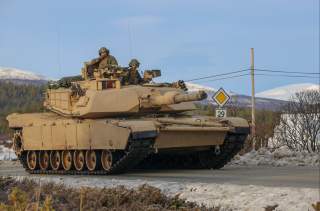Is the US Army really ready to Stop Russia in a War?
Maybe lots of boots on the ground in Europe isn't the best idea.
Would AirLand Battle have defeated a Soviet advance? The answer to this question is for the most part irrelevant. What mattered more is that the Soviets believed it would. Marshall Nikolai Ogarkov, chief of the Soviet General Staff from 1977-1984, assessed that these new doctrines and technologies had the potential to upend existing strategic calculations. For Ogarkov, these developments rendered the traditional Soviet reliance on numerical superiority obsolete. Therefore, during his tenure he attempted to reorient Soviet strategy towards a different approach, matching the United States in the qualitative arena of PGMs and computer technology. As one of the first Soviet theorists to acknowledge the changing nature of warfare, Ogarkov was a visionary, but his wary views on the United States technological superiority largely precluded a Soviet ground invasion of Europe. Once again, the United States had developed a credible deterrent that did not necessarily rely on triumphing in ground combat. Creating the possibility of a Soviet defeat proved just as useful.
Lessons Learned and Ways Forward
In the aftermath of the Soviet Union’s collapse, the 1990s witnessed both the reduction of American forces and Europe and the expansion of NATO, which taken together did not make for a more stable environment. Now, once again the United States and NATO are confronted with the specter of a European ground war, however fanciful the scenario. The Russian Armed Forces of today are not the military of the Soviet era. While having access to far less manpower, Russia has made strides in doctrine and technology, especially in the domain of precision fires. For the first time in Russian history, volunteers exceed conscripts on military rolls.
Along with these changes, Russian warfare in the 21st century is beginning to belie old traditions of mass and concentration. By taking advantage of ethnic fault lines and regional influence, Russia has managed to master a hybrid strain of warfare in Ukraine, utilizing mercenaries, militias, and irregulars. In this paradigm, conventional Russian troops are used primarily as advisors, with long-range artillery providing fire support to proxy forces. In a sense, then, Russia has proved more of an heir to the traditions of the New Look and AirLand battle than the United States has. They have proven adept at employing a low cost and low-risk way to achieve their objectives, as well as taking advantage of the historical inability of many western armies to respond effectively to these threats. Any future Russian incursion in Europe will almost certainly - and perhaps exclusively - utilize these tactics, further reducing the efficacy of large concentrations of ground troops intended to fight a solely conventional conflict.
These new factors, however, do not necessarily change the fundamental calculation. History suggests that leveraging American technology, developing strategies of offset, and shifting more of the ground burden to NATO allies can likely achieve the same effect as a conventional Army buildup on the continent will. If the United States’ intent is to demonstrate resolve in the face of possible Russian expansion, then to paraphrase Eisenhower, one brigade can serve that purpose as effectively as several. The Russians will always possess a conventional advantage in a geographic area that essentially serves as their backyard, and where the terrain lends itself to rapid offensives. Direct competition against an opponent in an area where they possess a clear advantage is merely foolish. At the very least, the United States should explore less costly and more nuanced options in its efforts to deter Russian aggression before committing to another buildup. In doing so, perhaps the Army can finally break free from the same myopic force structure cycle that has dominated military planning for decades.
Sam Canter is an Infantry Officer in the United States Army and has completed an MA in Military History at Norwich University, where his thesis focused on the failures of the Revolution in Military Affairs. The views expressed in this article are those of the author and do not necessarily reflect those of the U.S. Army or Department of Defense.
This article by Sam Canter originally appeared at Real Clear Defense. This article first appeared in 2019.
Image: Wikimedia

